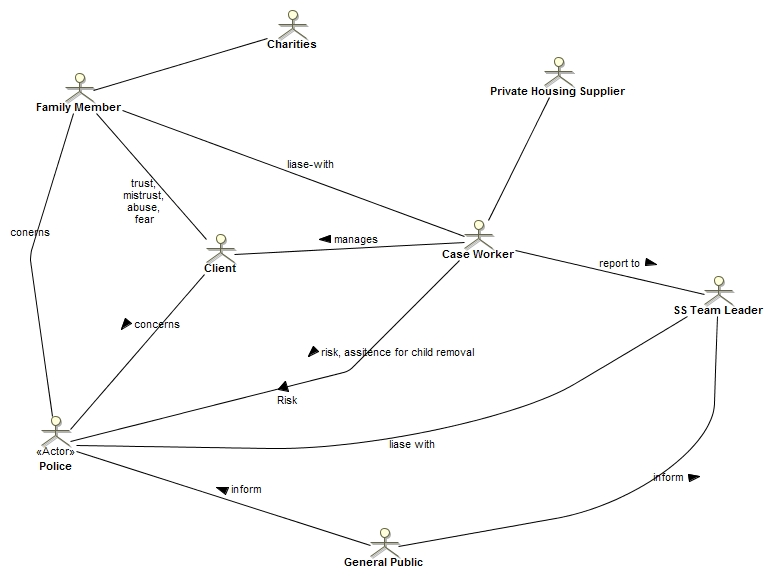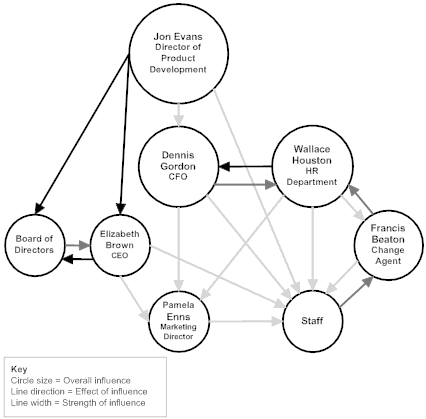Stakeholder Management Techniques
Introduction
On this page we outline some commonly used stakeholder management techniques
Techniques
Finding Stakeholders
Look for stakeholders based upon some common groups
- Corporate functions
- External users
- Those involved in projects
- End users
- Systems operations
Ask the following questions
- Who are the winner and losers?
- Who controls change management of the processes?
- Who are the system designers?
- Who are the decision makers?
- Who controls the procurement?
- Who controls resources?
- Who are the specialists?
- Who are the influencers?
Stakeholders appear all around you so it shouldn't be too difficult to create a decent list of candidate stakeholders. The problem is choosing the correct stakeholders, ones that will effectively contribute to your work.
Your ability to communicate effectively with your stakeholders can be the difference between winning and losing bids, successfully or unsuccessfully pushing through a change, selling or not selling a proposal, winning friends or insulting a client, knowing which battles to fight and which ones to walk away from and the list could go on. There are a number of techniques that you can employ to ensure that you have a greater chance of success in the above list.
Stakeholder/Actor interaction graph (not for public consumption)
A very simply tool used by the military the police. Plot onto a whiteboard or large piece of paper the people of interest to you, draw relationships between, label each relationship in such a way as to describe the relationship. The graph is useful for determining who you should and should not be speaking to, how much and what kind of information can be divulged to particular persons.
Stakeholder Influence/ Social Network Analysis (not for public consumption)
Useful for uncovering Where the Power Lies in Your Projects.
Many people can have influence over your projects. Some influencers are obvious and easy to spot. Others are less obvious, but are no less significant. If you fail to recognize and "manage" these influencers, you'll most-likely experience unexpected resistance to your projects, and sometimes bewildering failure. This is increasingly the case as you run large projects, and as the number of people affected by your projects increases.
People within your organization, at least, are supposed to work together openly and willingly. However, even here, your boss, your teammates, your customers, your boss's boss - even the CEO's nephew in the mailroom - can all impact you, given certain sets of circumstances.
However people outside your organization have all sorts of interests and motivations that you can't control. Here, knowing who influences who can be critical if you want to get anything done at all.
Elements of an Influence Map
An influence map is a visual model showing the people who influence and make decisions about your project. The map helps you understand how stakeholders relate to one-another, so that you can quickly see the way in which influence flows.
Remember that even the most powerful people rarely act alone. Top executives and other people in authority rely on advisers. Find out who the advisers are, and understand how they operate. This can be vital to your project's success.
Three main considerations when you construct an influence map:
- The importance or weight of a stakeholder's overall influence (represented by the size of the circle representing that stakeholder).
- The relationships between stakeholders (represented by the presence of lines or arrows between them).
- The amount of influence stakeholders have over others (represented by the heaviness of the lines drawn between them).
See our MindTools document for more information relating to this technique, also visit MindTools.
RASCI Charts (public consumption possible)
A useful tool for categorizing the roles that you will need to interact with during a task or a number of tasks. The roles are categorized into five groups, each with a specific mode of operation
- Responsible - the doer
- Accountable - get's their butt kicked if it goes wrong
- Support - the helper, quite often with more knowledge than the doer
- Consulted - where information about a task may be acquired
- Informed - needs to be kept abreast of the progress of the tasks
| Activity 1 | Activity 2 | Activity 3 | Activity 4 | Activity 5 | Activity 6 | |
| Role 1 | RA | RA | RC | RAC | I | I |
| Role 2 | R | R | C | C | I | A |
| Role 3 | RC | RC | C | I | I | R |
| Role 4 | I | RC | I | C | RC | C |
| Role 5 | C | I | I | C | A | C |

